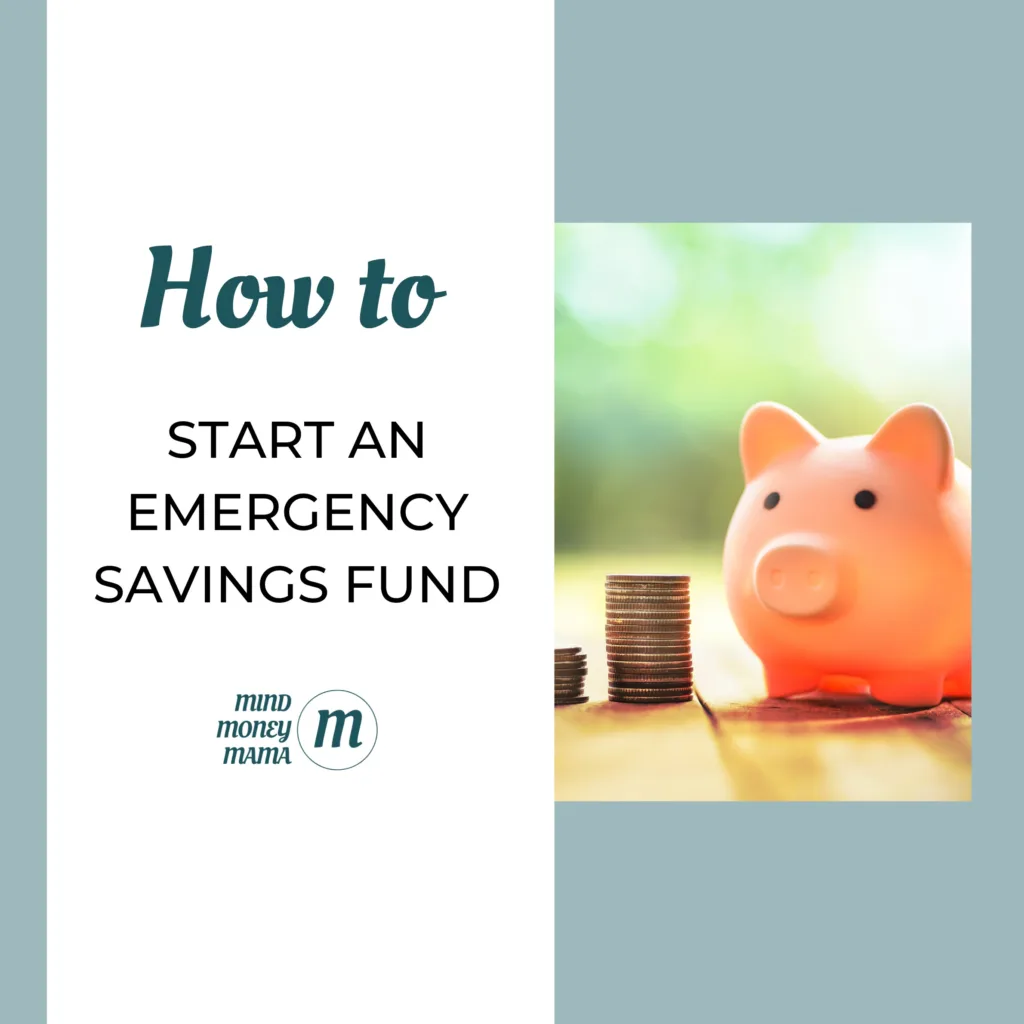I saw a headline today that 67% of Americans can’t cover a $400 emergency expense – YIKES! Now more than ever, the headlines are screaming about people not being able to cover basic expenses and living paycheck to paycheck. Don’t be another statistic and get your emergency savings started today!

What Is An Emergency Fund And How To Get Started?
An emergency fund is a savings account that you can use to cover unexpected expenses, such as a medical emergency, car repair, or job loss. To build an emergency fund, you need to make it a priority, determine your target amount, and create a budget.
Tip: Add “emergency fund saving” to my FREE Goal Planner and create a game plan using this post as a guide.
[RELATED] How to Achieve Your Goals

How Much In Savings Should You Have In An Emergency Fund?
The amount of emergency savings you should have depends on various factors, such as your living expenses, income, debt, and dependents.
A commonly recommended guideline is to have an emergency fund that can cover 3 to 6 months of your essential living expenses. This would provide a safety net in case of unexpected events such as job loss, medical expenses, or car repairs.
However, if you have a higher level of debt (student loans, anybody) or other financial obligations, you may need to have more saved up in order to feel secure. On the other hand, if you have multiple sources of income, an in-demand skill set, or low living expenses, you may be able to get by with less.
The key is to have enough saved up to cover your needs in case of an emergency, and to regularly review and adjust your emergency fund as your financial situation changes.
Determine Your Emergency Fund Goal
The first step in beginning to save for an emergency fund is to calculate your essential living expenses. This includes housing, transportation, food, utilities, healthcare, minimum payments on debt etc…
Decide on your target amount of emergency savings: The recommended amount for an emergency fund is 3-6 months’ worth of living expenses. Consider factors such as your income, expenses, and dependents when determining your target amount.
Create A Budget & Track Your Expenses
Create a budget:
Determine your income and expenses and find ways to cut back on discretionary spending so you can contribute more to your emergency fund.
Check out my post on simple ways to save money for ideas on how to lower your costs.
You can use online budgeting tools or apps to help you keep track of your expenses. Or you can download my FREE Budget Blueprint Guide if you prefer a printable that can help you keep track of your expenses.
[RELATED] How to Create a Budget 101: Free Budget Guide
Make it a priority:
Once you decide how much you want to save for your emergency fund, make it a non-negotiable part of your budget.
Start small:
Even if you can only save a small amount each month, it’s better than not saving anything at all. As you get used to budgeting and saving, you can increase the amount you put into your emergency fund.
Open a High Yield Savings Account to Automate Your Savings
Open a high-yield saving account or money market fund to maximize interest earnings: Look for a high-yield savings account that offers a good interest rate, so your money can grow as you save.
Then, set up automatic transfers from your checking account to your emergency savings fund. This way, you won’t forget to make a contribution and you can watch your emergency fund grow. If you set the transfer for the day after you are paid, you won’t be tempted to spend it.

Monitor and Adjust Your Emergency Fund
Make sure to regularly review and track your progress on a monthly or quarterly basis and make adjustments as necessary (increase savings, adjust budget, etc.). If you negotiate a raise, you can increase your contribution to your emergency savings.
Maybe you find additional ways to lower your expenses and are able to save sooner. Once you are comfortable with the amount you have saved, you can focus on investing or paying down debt to help move you toward your other financial goals.
[RELATED] How to Pay Off Debt: 5 Financial Freedom Strategies
Remember to be patient. Building an emergency fund takes time, so be patient and persistent. Keep your eye on the goal and continue to make contributions to your emergency fund, even if it’s just a small amount each month.
Conclusion
In conclusion, building an emergency fund is a critical step in achieving financial stability. By making it a priority, determining your target amount, creating a budget, starting small, automating your savings, being patient, and considering high-yield savings accounts, you can build a solid emergency fund to cover unexpected expenses.
Once you are comfortable with your emergency savings, you can move on to paying down debt or making investments which will help you get closer to your financial goals. Just remember consistency over perfection!
Let me know in the comments if you have an emergency fund or are inspired to start one!



